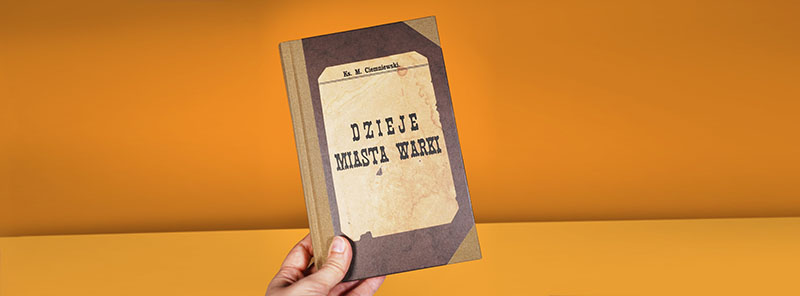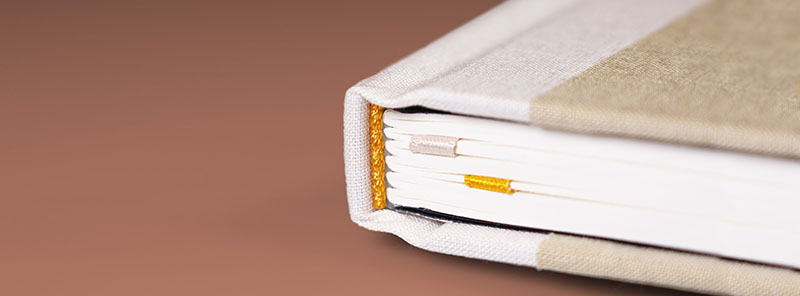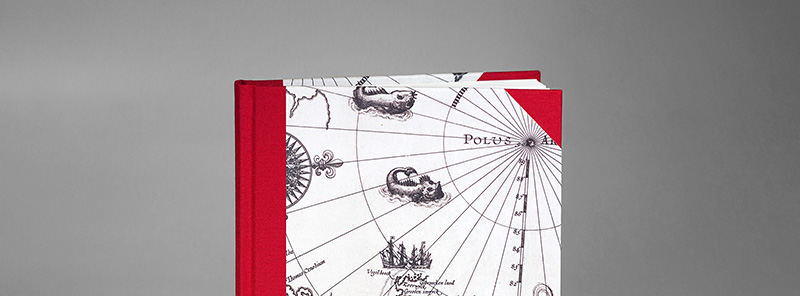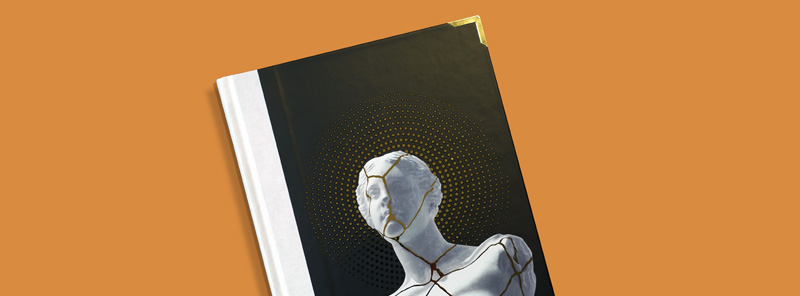
The potential behind half binding
There are few types of binding that provide as many possibilities as half binding. A proper design can help you use them wisely and demonstrate the appeal of your publication.
We have already published an article about half binding (you can read it here), so instead of repeating the basic information, we would like to present some options you could use to make your book more attractive.
1. Covers
Half binding is a sophisticated form of hardcover binding with which it shares a similar design. The cover – like in a conventional hard-cased book – consists of three separate parts: two case boards and a spine board. However, here each of these parts has a separate casewrap, which means that each of the casewraps can be different.
Our clients’ preferred solution is to have the same material on the front and back cover, but a different one on the spine. The most popular option is a book with the spine made of some kind of cloth and the covers made of high-density paper. Paper covering, such as Geltex, is also very commonly chosen. This kind of material has a fine texture giving the cover certain depth.
But your choice does not have to be confined to two materials. As a matter of fact, you can use a different material on each of the three casewraps. And it does not have to be just paper or cloth. Other available raw materials include e.g. eco-leather and cork. What’s more, the paper does not have to be plain – it can be textured or milled; both kinds are perfect for spine boards.

However, before your imagination runs wild, we should note that there are some technological limitations. Your vision will need to be consulted with our account managers to make sure the materials of your choice can be combined. We are constantly testing and trying new technologies and materials so that we can offer our clients the widest possible choice of options.
2. Casewrap width
In half-bound books the casewraps are offset from the spine edge. The normal offset for the cost-effective B5 paper size is 25 mm. As a result, the covering material on the spine is nicely exposed on the front and back covers. However, this value is not a legal standard, so it can be freely modified as required. The material used for the spine can reach as far as the middle of the cover, if practical and the sense of aesthetics and proportion permitting. Remember that there should be enough space left on the cover for the title and author’s name. Otherwise a non-standard approach to the cover design will be necessary, or the print size will have to be reduced which might compromise legibility. Of course, with bigger book sizes a smaller type will not be a problem.

3. Foam
An interesting option is to use a foam-based board in the cover. At first glance, such a cover looks quite conventional, except for a slightly puffy appearance. This detail might escape an untrained eye. Yet, if you take the book in your hands you will feel that the foam padding makes the cover soft to touch. This solution works great with elegant notebooks or children’s books.
4. Bound corners
Another enhancement making a half-bound book more distinctive is… corners.
We do not mean adding corner protectors (although these can also be used to an impressive effect!). What we mean here is using the covering material of the spine to the corners of the cover. Essentially, a cover like this is first bound in e.g. cloth, and then the casewraps are applied with their corners cut off. As a result, the underlying material is exposed on the corners.

Fans of the vintage style will surely appreciate such a stylish detail. That is why it is favoured among the publishers of reprints and books styled after old prints, as well as memoirs, historical books and diaries. It does not make this variety of half binding restricted to publications associated with the olden days. Depending on your choice of colours and materials, the end result can have a really modern feel, especially when printing planners or calendars.

5. Print enhancements and extras
When it comes to enhancements, it all depends on the material you wish to use for the cover. A whole range of enhancements are available, from hot-stamping, varnishing, embossing to page-edge dyeing.
The same goes for cover extras. We offer band closures, pen holders and corner protectors to make your publications stand out from the crowd of similar products. Everything depends on the end result you expect. We have got a number of different treatments to help your book look more attractive.
